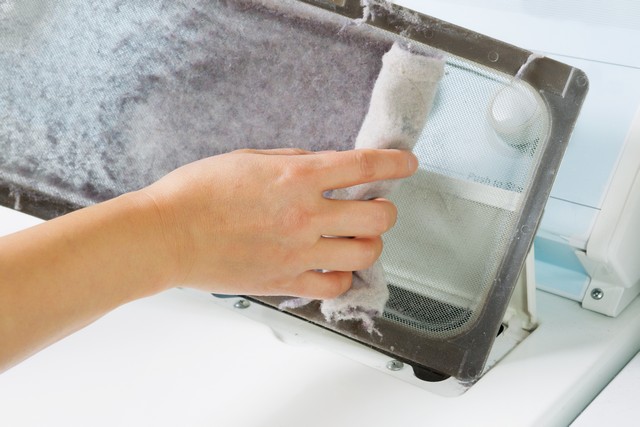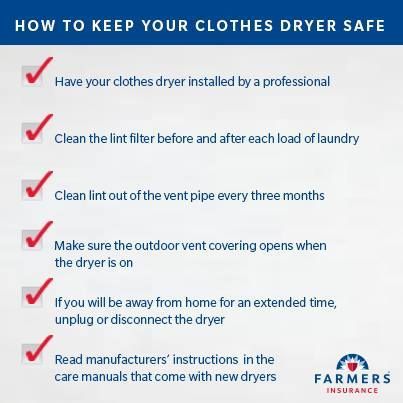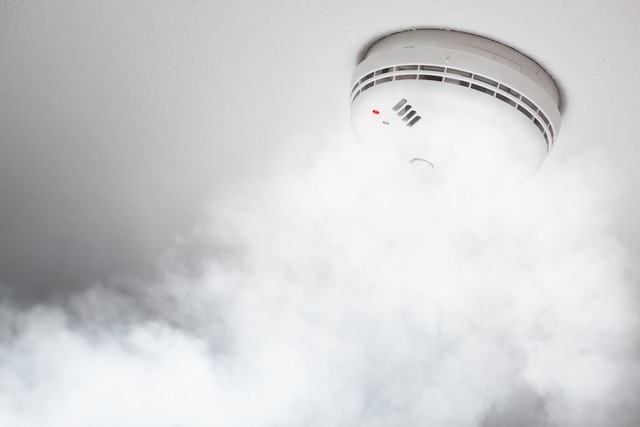Clothes Dryer Fire Prevention Tips!

Clothes Dryer Fire Prevention Tips!
In one of our previous blogs, we provided you with 35 fire prevention tips and listed the top 6 causes of house fires:
- Cooking: 42%
- Electrical: 18%
- Arson: 17%
- Heating: 15%
- Smoking: 5%
- Candles: 3%
A lesser known fact, one of the core causes of house fires is the dryer. Dryer fires are preventable!
In fact, according to the United States Fire Administration and the National Fire Protection Association:
- Clothes dryer fires account for over $238 million in losses every year.
- Approximately 15,970 fires are started by clothes dryers each year.
- These fires resulted in 13 deaths and 440 injuries.
- In addition to the fire hazard, improper dryer vent setups can cause carbon monoxide poisoning.
- The leading cause of home clothes dryer and washer fires was failure to clean (32%), followed by unclassified mechanical failure or malfunction (22%). Eight percent were caused by some type of electrical failure or malfunction.
The primary reason clothes dryer fires start is because they are not clean. The purpose of this article is to explain why cleaning your dryer ducts is so important in fire prevention.
Dryer Fire Causes!
Clothes dryers force hot air through a turning drum. Wet clothes placed in the drum dry because of the moving hot air.
As the clothes tumble and dry, lint is created. Most of the lint is trapped by the dryer’s lint trap. However, some of the lint can also be carried through the vent system with the moist, hot air that is vented out of the home.
Since lint is highly combustible material, as it builds up in the dryer and dryer vent, it will eventually reduce the dryer’s airflow, making it the perfect kindling to start a fire.
In addition to lint build up, dryer exhaust vent blockage can also result from birds’ nests, other animals, or from a damaged vent itself.
The end result from the blockage is your dryer overheats, which in turn can lead to a dryer fire.
Ten Signs Your Dryer Vents Need To Be Cleaned!

Ten Signs Your Dryer Vents Need To Be Cleaned!
Dryer vent fires are preventable because the leading cause is a build up of lint or blockage in the vents.
According to Angie’s list signs that your vents need to be cleaned include the following:
- Large amounts of lint accumulate in the lint trap for the dryer during operation.
- A musty odor is noticed in the clothing following the drying cycle.
- Clothing seems unusually hot to the touch after a complete drying cycle.
- The dryer vent hood flap does not properly open as it is designed to do during the operation of the dryer.
- Excessive odor is noticed from dryer sheets that are used during the drying cycle.
- Clothing does not dry completely after a normal drying cycle.
- Debris is noticed within the outside dryer vent opening.
- Excessive heat is noticed within the room in which the dryer is being operated.
- A visible sign of lint and debris is noticed around the lint filter for the dryer.
- Drying time for clothing takes longer than 35 to 40 minutes in duration.
Even though there are do-it-yourself vent cleaning kits consumers can buy, Angie’s lists recommends that you contact a professional once a year to inspect that your vents are installed correctly, working properly, and also thoroughly clean your vents using their training and specialized tools.
Top 9 Tips To Prevent Clothes Dryer Fires!

- Inspect your outdoor vent. Check to make sure that your outdoor vent flap is not covered by snow or debris.
- Do not dry items that have been stained with volatile chemicals. Wash clothing stained with flammable chemicals more than once and do not use the dryer to dry these items, opting for a clothes line dryer.
- Don’t leave your dryer unattended. If you need to leave your home, turn off the dryer during the laundry cycle.
- Install with care. Follow the manufacturer’s instructions when installing the vent pipe. Use a short, straight pipe that is an adequate distance from the wall. Reducing the bends in the dryer vent pipe creates fewer opportunities for lint to gather. Invest in a dryer vent fan if you have to vent your dryer over a long distance. Dryer vent fans increase the airflow through the duct every time you turn on your dryer forcing debris out.
- Remove combustibles. Cleaning supplies and other flammable liquids should not be kept near the dryer. In addition, sweep out dust in the areas around and underneath your dryer regularly.
- Use a metal dryer duct. Metal ducts are better than foil or plastic ducts for two key reasons. First, unlike foil or plastic ducts, metal ducts do not sag. This is important because sagging ducts contributes to lint build up at low points. Second, metal ducts are more likely to contain any fires that would start.
- Read clothing tags and labels. Always use caution when you are drying bath mats, padded bras, and bibs because they may contain rubber that should not be exposed to hot temperatures. Also, if the label instructs you to tumble dry an item, follow the advice and do not dry at hotter temperatures.
- After each dryer use, check your clothes. If your clothes do not feel dry or are extra hot after a normal drying cycle, then this may indicate that something is wrong. Before using the dryer again, check for a plugged vent and clean out any lint.
- Clean out the lint. Clean out the lint trap after each use and once a year hire a professional to clean out the vent pipes.
Got Fire Prevention Questions?

Got Fire Prevention Questions?
Puritan Restoration is here to help. If you have questions about fire prevention, give us a call, 800-464-0063, or send us an e-mail. We look forward to serving you! 🙂
Clothes Dryer Fire Prevention Tip Summary!

Clothes Dryer Fire Prevention Tip Summary


Recent Comments